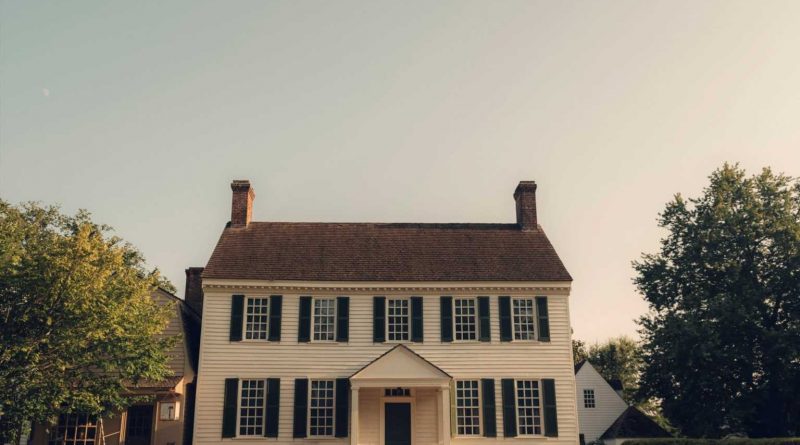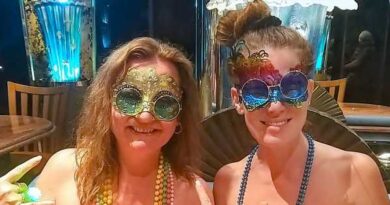These eye-opening field trips can spark kids’ curiosity
While most school trips remain on hold due to the pandemic, many families are planning their own educational outings this spring and summer. They’re looking for travel experiences that match curious kids with issues that engage them, from racial equity to cultural appropriation.
“In addition to discussions around inclusivity, students are interested in sustainable tourism and the impact they have on the environment,” says Carylann Assante, CEO of the Student Youth Tourism Association, an organization that helps schools plan and execute field trips.
Load Error
Whether it’s a visit to a historical site, a museum, a national park, or a play, diverse views help to meet students’ questions head-on, says Impact Travel Alliance founder Kelsey Louise.
When we fail to include all stories, says Brent Leggs, executive director of the African American Cultural Heritage Action Fund at the National Trust for Historic Preservation, “we lose an opportunity to stretch our intellectual curiosity.”
“A big piece of the problem we’re facing with racial discrimination and white supremacy boils down to lack of empathy,” says Christine Koh, a neuroscientist turned multimedia creative. “Research shows that helping kids see their similarities with other people is a key way to help develop empathy.”
From military forts to gold rush towns, these field-trip destinations—once it is safe to visit—will help students fill in some of the gaps in their textbooks and newsfeeds.
New eyes on history
Civil War sites, plantation homes, and historical properties often celebrate the conquerors and owners at the expense of the people they affected or displaced. “The historical interpretation is amazing in these places, but often misses out on massive things or doesn’t go back far enough,” says Meera Dattani, editor of Adventure.com and the Unpacking Media Bias newsletter. Her advice: Look for places where inaccuracies are being addressed in honest and respectful ways.
Minnesota’s Historic Fort Snelling is one example of a reckoning happening across the country. A revamped interpretation strategy is poised to expand the stories of the Dakota people, African Americans, Japanese Americans, women, and others who have until now been given little attention at this early-19th-century military garrison.
(Historic interpreters are changing the conversation about race.)
Historical markers that dot roadsides across the nation are also being rewritten in states such as Michigan, recognizing that past accounts have often been one-sided.
Different social perspectives
Places that share how North America was built (and who did the building) show a side of history that can be especially impactful for families of color, but is important for everyone, says Alex Temblador, a novelist, travel writer, and historian. Ellis Island, Angel lsland Immigration Station (a primary entry point for many Asian immigrants), and the Canadian Museum of Immigration at Pier 21 all offer opportunities to connect present-day immigration and refugee experiences with those of the past.
“If there’s no story about you belonging in the U.S., or how you got here,” says Temblador, “you just think that your community is less than other communities.”
Families can learn about the little-known experiences of Black and Chinese communities during gold-rush times at places like Barkerville, in British Columbia, Canada, home to one of the first Chinatowns in North America. Klondike Gold Rush National Historical Park, in Alaska, tells the story of Shaaw Tláa (Kate Carmack), an Indigenous woman credited with the discovery of the nugget that set off the Klondike gold rush.
Custer’s Last Stand is viewed from a different perspective during a tour in southeast Montana with an Indigenous guide. An exhibit at The Levine Museum of the New South, in Charlotte, North Carolina, explores Lumbee people and culture in portraits.
(These 12 photographers explain why diversity is critical to storytelling.)
Learning about the work of Fred Shuttlesworth at the twice-bombed Bethel St. Baptist Church, in Alabama, adds layers to the oft-told stories of the civil rights movement. A visit to New York City’s Stonewall National Monument—in Christopher Park, across from the Stonewall Inn—is a chance to understand the significance of the 1969 riots in the fight for LGBTQ equality.
Neighborhood geography
Segregation and redlining kept many American city centers homogeneously white. As a result, non-white residents set up neighborhoods of their own. Today many of those places offer tours and alternate viewpoints.
On the Soul Voices of Frenchtown Heritage Trail, plaques with audio accompaniment tell the stories of prominent residents (both living and deceased) in one of Tallahassee’s oldest African American communities. And at the Weeksville Heritage Center, in Brooklyn, tours of the last three historic Hunterfly Road houses give glimpses into the free Black community established here in 1838.
Exhibits and a reconstructed temple showcase Chinese American history at the museum at Ng Shing Gung, in San Jose, California. The Chinese American Museum, in Los Angeles, and the Chinese American Museum of Chicago both include permanent exhibits showcasing the community’s long history of contributions to the country.
Eastside Los Angeles provides opportunities to learn about the Chicano civil rights movement. And the Workhouse Arts Center, in Virginia, tells the story of the more than 70 suffragists who were imprisoned here in this former correctional facility for demanding the right to vote.
Beyond Art 101
Alongside Picassos and Rembrandts exists a world of diverse art. An interactive map by Museum Hue pinpoints BIPOC (Black, Indigenous, people of color) museums and exhibits. At New York’s Metropolitan Museum of Art, the Art and Peoples of the Kharga Oasis exhibit, curated by Andrea Achi, adds Egyptian artifacts to the medieval arts galleries.
(See amazing architecture from your car window.)
Opening later this month, the new Qaumajuq, at the Winnipeg Art Gallery, will house the largest public collection of contemporary Inuit art in the world.
Mural walks and graffiti tours can offer another way to learn about local community history at a grassroots level.
Outdoors recess
It’s time to explore the outdoors through a new lens, says Candace Campo of Talaysay Tours, an all-Indigenous guiding company. “We try to share, respectfully, [that] it’s not wilderness,” she says. “People living here utilized this land from time immemorial, and it really separates people from the land when you refer to nature as wilderness, because it’s a collective home.”
(These Indigenous women are reshaping Canada’s tourism industry.)
Look for Indigenous experiences in places beyond national parks and within city spaces, suggests Keith Henry, president and CEO of the Indigenous Tourism Association of Canada.
“You can literally point a dart today anywhere on the map in Canada, and if you know where to look, there are Indigenous experiences that are being developed or are in operation right now,” he says.
There are stories from other marginalized groups waiting to be uncovered in state parks and national historical sites, as well. First Landing State Park was built by Company 1371, an all-Black regiment. They’re responsible for more than 20 miles of trails and the wide variety of trees and shrubs that remain to this day. Seminole Canyon State Park, in Texas, was once home to a mixed-race community (runaway enslaved Black people and Seminole people) that came to Texas as fighters for hire. And the Chinese Arch at Golden Spike National Historic Site commemorates the hundreds of Chinese workers, many of whom lost their lives, who helped build the transcontinental railroad.
You’ll find similar stories in other park spaces, but even local beaches can offer an opportunity for learning. In St. Augustine, Florida, sunbathers at Butler Beach might learn that this popular spring-break destination was founded by businessman and civil rights leader Frank B. Butler as the only beach in the area that admitted Blacks.
Study guides
Research before you go, ask questions while you’re there, and discuss what you’ve learned when it’s over, says the National Trust’s Brent Leggs, who suggests consulting hotel concierges, state and local tourism offices, and museum curators for suggestions of other non-mainstream opportunities.
Online sites such as Where Women Made History and Destination Indigenous, and apps such as Whose Land could help inform route planning. Older kids can read Anu Taranath’s book Beyond the Guilt Trip. Aimed at students, it offers ideas for consideration before, during, and after a trip. Everything from the souvenirs you buy to the meals you eat along the way can broaden your family’s experience, says Impact Travel Alliance’s Kelsey Louise.
“In some ways I understand why people resist learning about diverse narratives; it’s common for people to gravitate toward the familiar and we want to see ourselves in stories,” says Koh. “But retaining a narrow perspective is not going to serve you, or your family, as our country continues to become more diverse.”
Source: Read Full Article




